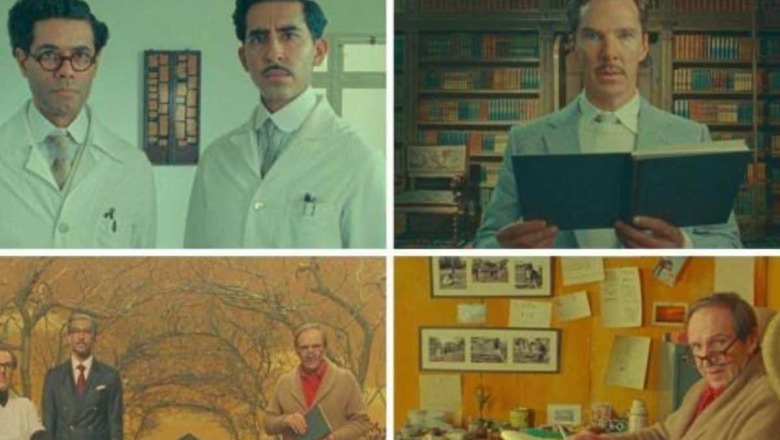
views
Wes Anderson, celebrated for his signature style of intricate storytelling, meticulously composed visuals, and ensemble casts, presents a quartet of short films inspired by Roald Dahl’s cherished tales. In this enchanting anthology, Anderson seamlessly blends his love for pastel color schemes, rich symbolism, and an exceptional ensemble, including the talented Dev Patel, Rupert Friend, Ralph Fiennes, Benedict Cumberbatch, Ben Kingsley and Richard Ayoade to create a cinematic experience that captivates and enchants. He created a theatrical experience with these shorts by using the same actors who played different roles in every film.
“The Wonderful Story of Henry Sugar”
Anderson’s anthology commences with The Wonderful Story of Henry Sugar, where the charismatic Dev Patel takes on a pivotal role alongside Ralph Fiennes. The film introduces us to Henry Sugar, a London aristocrat with an unusual fascination. It closely adheres to Roald Dahl’s narrative, blending Dahl’s storytelling with Wes Anderson’s distinctive visual style. Henry Sugar embarks on a magical journey, brought to life through meticulous set design. The film explores themes of wonder and the blurred boundary between reality and fantasy.
“The Rat Catcher”
The film’s color scheme shifts to match the mysterious tone, with deep, moody hues dominating the screen. Dev Patel’s role adds depth and intrigue to the narrative. Set in an English town, the story revolves around a reporter and a mechanic who engage the services of the eccentric Rat Man. The Rat Man passionately lectures them on the art of rat-catching, both in sewers and elsewhere. As the narrative unfolds, it becomes apparent that the Rat Man himself bears an uncanny resemblance to a rat. A mysterious and unsettling moment involving a rat adds to the intrigue. The film draws inspiration from Roald Dahl’s own experiences in a small-town working environment.
“Poison”
“Poison” takes us into a world of dark comedy, bathed in Anderson’s unmistakable aesthetic. Set in British-ruled India, the story revolves around Woods, who discovers a deadly krait snake resting on his friend Harry. Seeking help, Woods contacts Dr. Ganderbai to remove the snake. They attempt various methods, including injecting anti-venom and using chloroform. The film delves into the power of imagination as it blurs the line between reality and perception. The fate of the snake and Harry remains ambiguous, with elements drawn from Roald Dahl’s own experiences.
“The Swan”
Concluding the anthology is “The Swan,” a stop-motion animated gem. In this dark and enigmatic tale, two young outlaws, Ernie and Raymond, armed with a rifle, set out on a journey to hunt. Along the way, they encounter Peter Watson, a kind-hearted young man. However, Ernie and Raymond subject Peter to cruel and unusual torments, including tying him to train tracks and forcing him to retrieve a swan’s body. The film leaves Peter’s fate open to interpretation and is based on a real event that Dahl found in a news clipping.
In these four short films, Wes Anderson invites us into whimsical and imaginative worlds, where each detail, from color palette to ensemble cast, serves a purpose. Each film, despite its brevity, is a testament to Anderson’s commitment to storytelling, craftsmanship, and his inimitable quirkiness. These miniature cinematic gems provide a delightful escape into the whimsical worlds only Anderson can conjure, leaving audiences eagerly anticipating his next full-length feature. They transport us into dreamlike landscapes where reality is artfully intertwined with fantasy, leaving us with a sense of wonder and a desire to revisit these delightful stories time and time again.




















Comments
0 comment